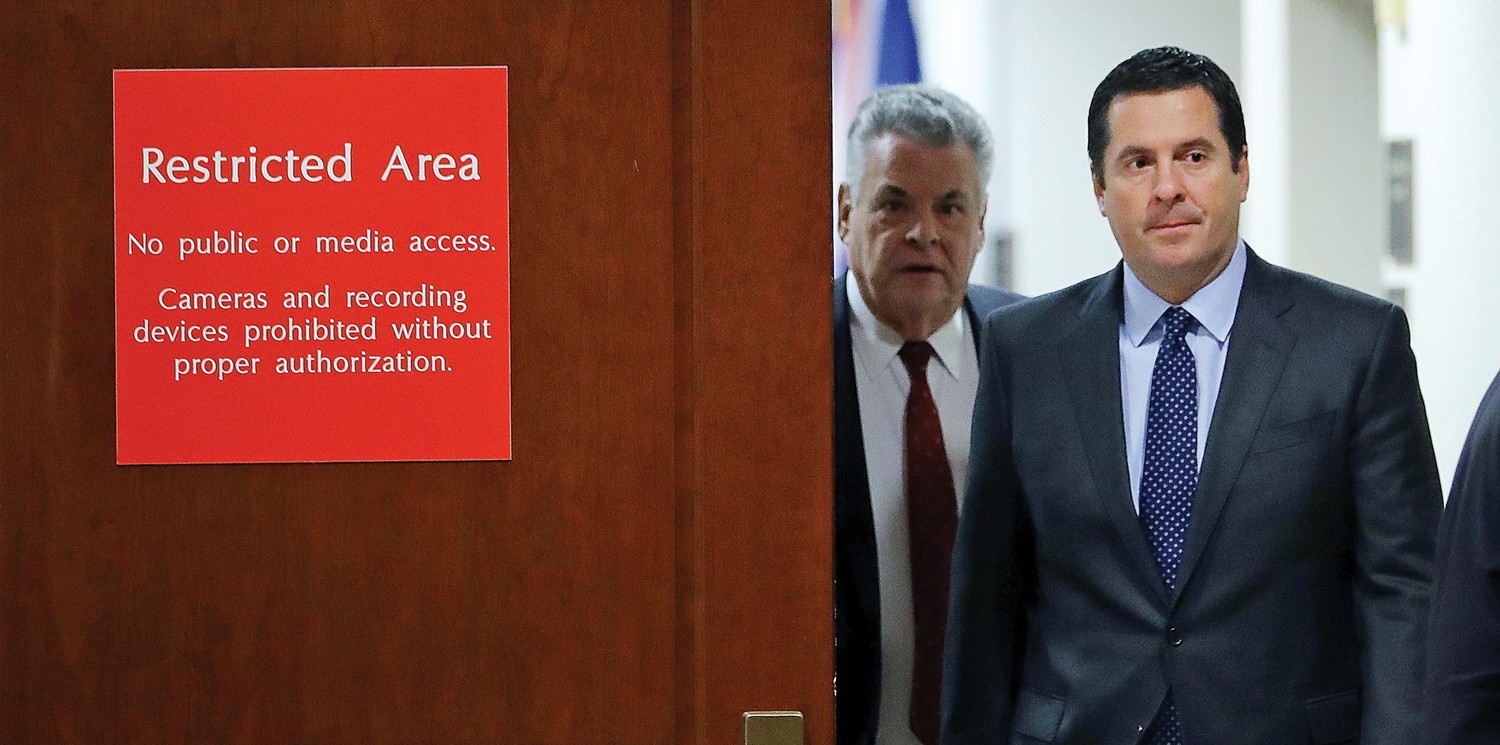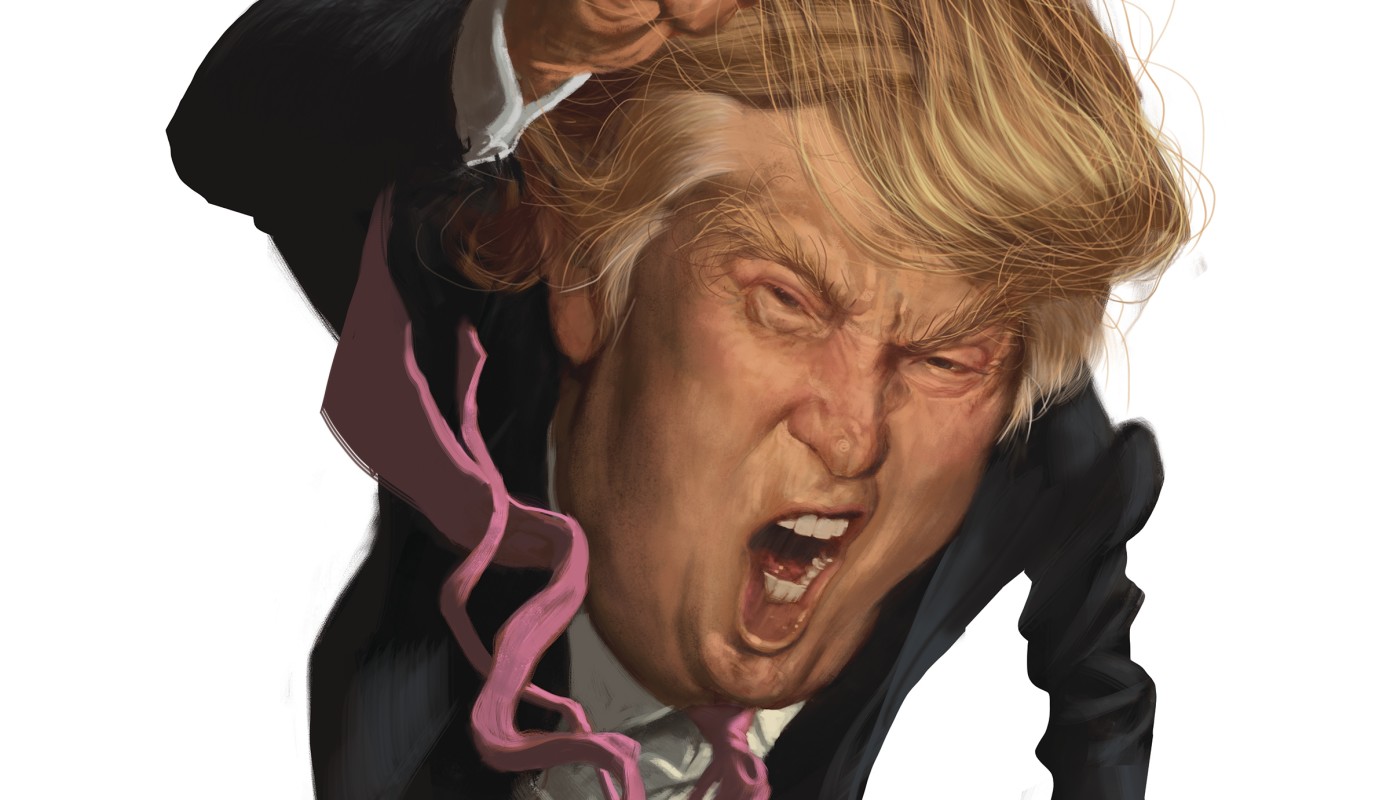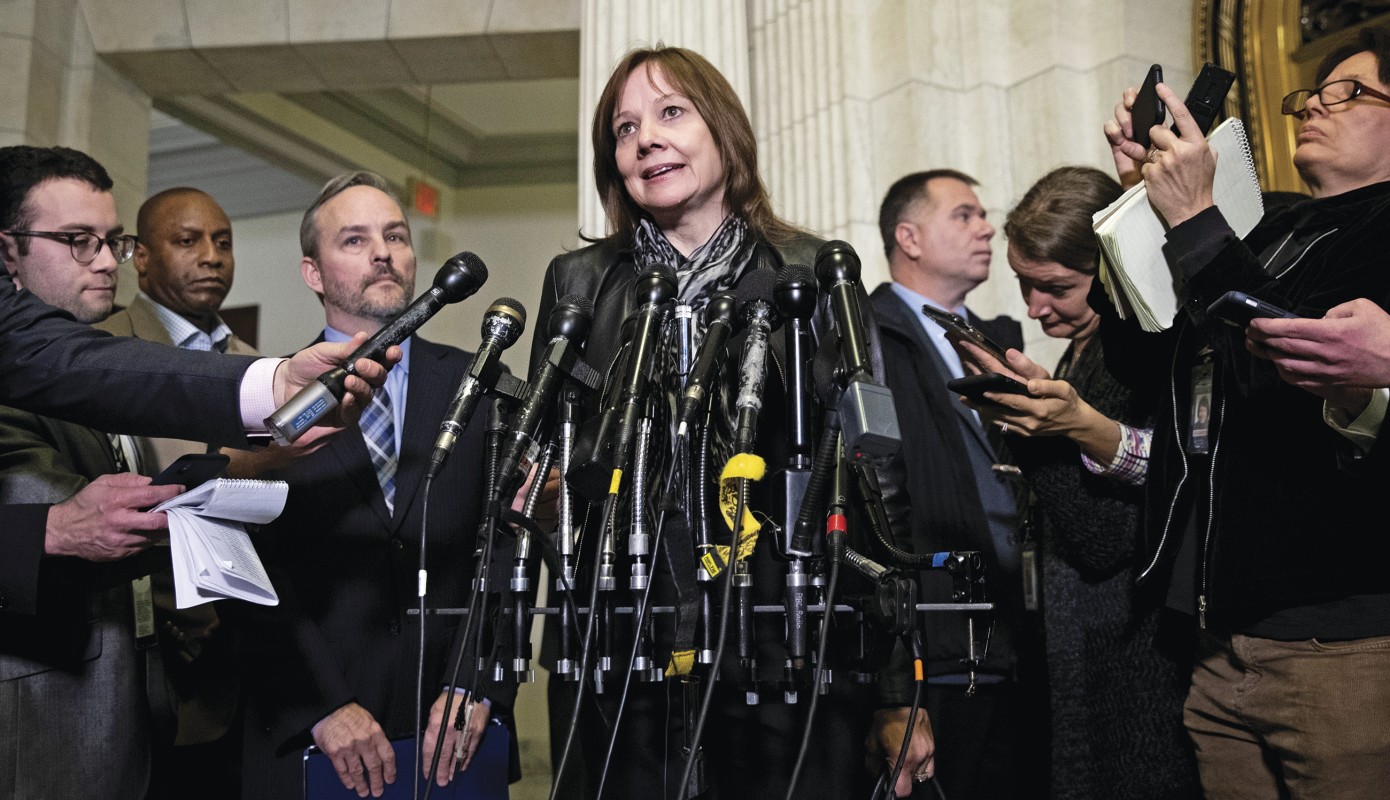In September 2005, I sat in a small, windowless office with musty carpeting on the eighth floor of the Ops2B building at the National Security Agency’s headquarters in Fort Meade, Maryland. I’d been working at the agency for two years, a career shift that I, like so many others, made after the terrorist attacks of September 11, 2001. Although I had a law degree, my first job at the agency had been in the office of policy. Two years later, I’d switched to this new role at the NSA Office of General Counsel as an operations attorney, part of a group of lawyers that advised the NSA’s analysts and information collectors on the authorities and restrictions that governed their work. We were also responsible for all of the filings with the Foreign Intelligence Surveillance Court (FISC) and worked closely with the Department of Justice drafting the pleadings requesting authority to carry out electronic surveillance.
“Here,” my boss said that morning. He gestured to a stack of books on a particle-board bookshelf. “Start here.” The books he pointed to were Government Printing Office volumes of the proceedings of the Church Committee, which in 1975 had investigated the U.S. intelligence community’s surveillance of Americans.
I had a top-secret clearance already; I’d been working closely with the NSA’s operational units for two years; and I was generally familiar with what I would come to think of as the NSA’s bedtime stories: the stories that were repeated every single year in our required intelligence oversight training, the stories of intelligence community excesses, like the NSA’s own participation in Operation SHAMROCK, which had intercepted and read telegrams to and from individuals in the United States for 30 years, from World War II through the 1970s. Against that backdrop, I wasn’t sure why he wanted me to read these dog-eared, decades-old reports.
“You’d be surprised,” he said, “how relevant these volumes still are today. Read these, then read the FISA [Foreign Intelligence Surveillance Act] statute and the FISA minimization procedures. Then we’ll put you to work.”
As I sat at my desk thumbing through the six volumes of the report and seven volumes of hearings, I was struck by just how significant the Church Committee findings still were in 2005. And as news reports unfolded in July 2018 about the release of the Carter Page FISA documents—the first-ever declassification of this kind of government application—I couldn’t help but think about the enduring lessons of the Church Committee: what the committee’s proceedings explained about the creation of FISA, how the law has evolved, and how politics has always played a role in shaping electronic surveillance law, albeit in different ways during different decades.
Historical comparisons are fraught with opportunities for inaccuracy, but by all accounts the late 1960s and early 1970s were an era in which there was as much social division as there has been from 2016 to the present. The culture wars then were shaped by antiwar protests and the civil rights movement, and more than a few government agencies mistook internal protest for national security threats. By the late 1970s, there had been a flood of allegations that led to the formation of a Senate committee (and a parallel one in the House) to investigate “the extent, if any, to which illegal, improper, or unethical activities were engaged in by any agency of the Federal Government,” all with an eye toward the critical principle that “the preservation of liberty requires the restraint of laws, and not simply the good intentions of men.” In its investigation of NSA activities in particular, the committee noted:
It has the capacity to monitor the private communications of American citizens without the use of a “bug” or “tap.” The interception of international communications signals sent through the air is the job of NSA; and, thanks to modern technological developments, it does its job very well. The danger lies in the ability of the NSA to turn its awesome technology against domestic communications.
The committee delved into abuses by the Federal Bureau of Investigation (FBI), the Central Inteligence Agency (CIA), and the Defense Intelligence Agency (DIA). And—relevant to the later FISA legislation—the committee noted that it was deeply concerned about interception of domestic communications by the NSA and by the fact that, at the time, the NSA operated under an executive branch charter, without a statutory authorization or framework for its intelligence activities.
As the lengthy public hearings of the Church Committee wore on, a consensus began to form that, while it was necessary to implement reforms within the intelligence community, executive branch changes alone wouldn’t be enough. President Gerald Ford signed the executive order that would serve as the predecessor to the current EO 12333, defining the lanes in the road traveled by various agents of the intelligence community and, for the first time, requiring attorney-general-approved guidelines for the collection, retention, and dissemination of information involving U.S. persons.
Shortly afterwards, Congress debated new legislation titled the Foreign Intelligence Surveillance Act, designed to constrain electronic surveillance in ways that would protect the privacy interests of U.S. persons, restrict the government’s ability to surveil U.S. persons for intelligence purposes, comport with the principles of the Fourth Amendment, and generally raise the bar for wiretapping carried out for intelligence purposes to a level of scrutiny and rigor that was closer to the set of standards that the government had to meet for criminal wiretaps under Supreme Court case law.
The legislative history of the House Permanent Select Committee on Intelligence’s (HPSCI) FISA hearings contained a lengthy exploration of the history of wiretapping in the United States, with a particular focus on the activities of the Federal Bureau of Investigation. It was clear that the HPSCI considered the FBI’s latitude too broad, whether it was acting on its own initiative or instituting wiretaps at the president’s behest. At the same time, the HPSCI pointed to the mere existence of the CIA and other intelligence agencies as proof of Congress’s authority to legislate electronic surveillance for national security purposes. In the view of the House report, while the president’s Article II powers previously had been (and would continue to be) invoked to justify intelligence-gathering activities of all kinds, the fact that Congress authorized and appropriated funds for agencies like the CIA led to the logical conclusion that it, too, had authority over foreign intelligence matters.
There was robust debate over what shape electronic surveillance legislation might take. In the end, what Congress devised was a law as complicated as the questions it was trying to address, and as flawed as any legal structure with a limited ability to keep pace with changes in technology. Congress’s aim was to strike a balance between national security and privacy and to ensure that electronic surveillance could be carried out when the need for intelligence outweighed privacy concerns. A number of dissenters expressed concern about whether it was appropriate for judges to have any role in national security at all—it fell outside the Article III remit, and judges would not be as familiar with intelligence techniques as Congress. However, HPSCI’s report concluded, “Whenever an electronic surveillance for foreign intelligence purposes may involve the fourth amendment rights of any U.S. person, approval for such a surveillance should come from a neutral and impartial magistrate.” HPSCI noted the benefits to this approach and even anticipated the potential problem that a court might merely serve as a rubber stamp:
By requiring a judge ultimately to approve foreign intelligence electronic surveillances, the bill would require the responsible officials in the executive branch to consider and articulate the facts and their appraisal of the facts. If the executive officials were the approving authority, the same consideration and articulation would not be as likely to occur. The experience under [the Wiretap Act] is instructive. While few orders for law enforcement electronic surveillance have been denied, the committee believes that the reason is the care and scrutiny which applications receive before they ever go to a judge. The institutional response to an outside approval authority, then, is to make every effort that only good applications should go to the approval authority.
On that basis, Congress took the extraordinary step of establishing a special federal court, staffed by sitting federal judges, that would conduct its proceedings based on some of the most highly classified information in the government’s possession and that would exercise both soft and hard power to keep the government honest. The soft power rested in the unwritten assumption that the FBI, CIA, NSA, and Justice Department would ensure that applications to the FISC were sound, well-supported, well-reasoned, and met the requirements of the statute—and consequently that those applications would be worthy of approval, either on their face or after some revisions, in nearly all cases. And the hard power would lie in the FISC’s enforcement abilities: For every order signed by the FISC, the court had the authority to require that the government demonstrate compliance with the terms and conditions of the order. That meant the government would have to report any instances of noncompliance with the minimization procedures, and the court would have broad authority to require the government to undertake corrective measures—even if they were costly ones and even if it meant terminating surveillance.
This complicated statute has a number of features that merit attention, from the four-part definition of what precisely constitutes “electronic surveillance” under the law to the perilous decision to tie that definition to specific technologies that existed in 1978. Congress has never been able to get away from that framework, even as technology and telecommunications have evolved and the law has been amended like a house with ramshackle additions that weren’t planned by an architect; they serve their function but with odd mismatches that betray them as afterthoughts.
Congress hoped it could curb abuses and restore public trust by creating a framework for domestic electronic surveillance in which the Fourth Amendment rights of U.S. persons would be protected and all three branches of government would play vital roles in authorization, operations, and oversight. Congress even thought it had the leak problem solved. According to the HPSCI report, “One need only read the newspapers to realize that a primary cause of �?leaks’ is the uncertainty as to the legality and propriety of various intelligence activities.” It was HPSCI’s hope that “by eliminating that uncertainty with respect to foreign intelligence electronic surveillances, this bill will go a long way to stemming �?leaks.’ ”
On July 21, 2018, the Department of Justice took the unprecedented step of releasing declassified, redacted versions of FISA applications—an initiation and three renewals—for electronic surveillance of the United States person Carter Page. Page had at one time been a foreign-policy adviser to presidential candidate Donald Trump. Page had also previously lived in Russia, where he worked as an energy consultant. More significantly, in terms of potentially sketchy ties to Russia, Page had been in contact with two men who were later indicted on charges of being Russian spies. It was these interactions that first brought Page to the attention of the FBI—and indeed, these interactions were among the facts cited in the FBI’s statement of facts alleging probable cause to believe that Page was acting as an agent of a foreign power.
The Page FISA applications have been the source of ongoing controversy ever since March 4, 2017, when President Trump first tweeted that under the Obama administration, he had his “wires tapped” in Trump Tower. Of course, at the time no one outside the national security community had any inkling what he was talking about. There was lots of speculation about whether he was referring to phone calls his national security adviser, Mike Flynn, had with Russian ambassador Sergey Kislyak—a series of communications which Flynn, a retired Army general, would later lie about, leading to the criminal charges to which he would plead guilty. In hindsight, as garbled as Trump’s wiretap tweet was, one has to wonder if he hadn’t just found out about the surveillance of Carter Page.
What we now know from the declassified documents is that the FBI submitted the Page application to the FISC in October 2016, after Page had left the campaign. During the summer of 2016, news outlets had reported on a speech that Page made in Moscow that was highly critical of the United States and on Page’s ties to prominent Russian figures with connections to the Kremlin. It sounded entirely too reminiscent of the heat the Trump campaign was taking in the press for the ties its campaign chairman, Paul Manafort, had to shady Russian oligarchs. By September 2016, both Manafort and Page had left the Trump campaign.
In October, the FBI noted a string of activities that raised concerns about Russian interference in the 2016 presidential election. These were laid out in the initial application: The FBI described Russia’s clandestine intelligence activities; its historical attempts to interfere in U.S. elections; its particular efforts to interfere in the 2016 election—including the cyberattack on the DNC and the release of hacked emails by WikiLeaks—and the intelligence community’s joint assessment, a version of which was released to the public on October 7, 2016, concluding that the intelligence community was confident that Russia’s senior-most officials directed the targeting of the DNC.
Although Page had left the campaign, the FBI feared Russia was using him for its own purposes. The application states that the FBI alleged there was probable cause to believe Page was an agent of a foreign power under a specific provision of FISA that involves knowingly aiding, abetting, or knowingly conspiring to assist a foreign power with clandestine intelligence gathering activities, engage in clandestine intelligence gathering at the behest of a foreign power, or participate in sabotage or international terrorism or planning or preparation therefor.
The FBI then laid out its case. Many of the details specific to Page in the initial application are redacted. However, it appears to be a chronological narrative that includes references to Page’s years in Moscow in the early 2000s as well as a discussion of Page’s interactions with three intelligence officers of the Russian SVR (the country’s CIA equivalent), all of whom were indicted in the United States for various crimes that amounted to spying for Russia. Two of the SVR agents fled the country, and the third was convicted of conspiracy to act as an unregistered agent of a foreign government and sentenced to 30 months in prison. (These charges, coincidentally, are the same ones leveled against Maria Butina, who is in custody and awaiting further criminal proceedings in the U.S. district court in Washington.)
At this point in the application, the narrative shifts to Page’s actions during the campaign, in particular his July 2016 trip to Moscow to speak at the New Economic School, where, according to the FBI application and the now-infamous Steele dossier, Page met with high-ranking Russian government officials. It’s this portion of the application that has engendered the greatest controversy. In January and February 2018, the HPSCI—the same committee that had so soberly and thoughtfully laid out a balanced structure for oversight of electronic surveillance activities—exploded into a chaos of dysfunction.
The HPSCI had been operating as a bit of a circus from the beginning of its Russia investigation in early 2017, with Chairman Devin Nunes (R-Calif.) lobbing wild accusations about the unmasking of the identities of U.S. citizens in intelligence reporting by Obama administration officials—a series of accusations that led Nunes to make bizarre late-night trips to the White House and convene press conferences on the White House lawn. Nunes briefly recused himself, although it was unclear just how distant he remained from the HPSCI majority’s efforts during the investigation. Despite the constant sense that this once-sober committee was on the verge of running off the rails, it managed to cling to just enough credibility to stay on track until the winter of 2018, when Nunes insisted on releasing a memo that endorsed a new conspiracy theory about how a Democratic administration had: abused the FISA process by using salacious opposition research (with the implication that the funding source made the information itself suspect), incorporated that suspect research into a FISA application, and sent the application to the secret proceedings of the FISC without telling the court there could be bias in the information. Through this complicated string of subterfuges, Nunes claims, the Democrats managed to pervert justice in order to spy on the Trump campaign.
Over time, the conspiracy theory would deepen: Since the dossier included information from sources in Russia, that meant that the Hillary for America campaign had colluded with Russia to provide fake information to Christopher Steele, who slipped the fake news to the FBI, which then pulled the wool over the eyes of a succession of four FISC judges, each of whom signed off on further surveillance against Carter Page.
It’s an exhausting theory to contemplate, and yet one that many people, fueled by conspiracy-mongering rumors on the Internet about the workings of the “deep state,” believed. What the newly released documents show is that the theory is utterly bunk.
On page 15 of the initial application, the FBI offers a lengthy explanation of the sourcing of information about Page’s 2016 trip to Moscow. In sum, the Steele dossier was only one part of the case against Page and only one part of the dossier was cited; it focused on a single event against a much larger background of Russian activities and Page’s own activities and interactions with indicted and convicted Russian spies. Page was, after all, a man who had boasted in a 2013 letter that he was an informal adviser to the Kremlin.
So against this fuller background of facts (not the complete facts, since the released applications are full of redactions, and since there may be other facts that haven’t yet come to light), it is apparent that the FBI would have been derelict in its duty if it didn’t at least investigate whether there was cause for concern. Page had longstanding ties to Russia, including past ties to indicted and convicted Russian spies; the intelligence community had concluded that Russia was undertaking active measures to influence the 2016 U.S. election; and Page made a trip to Russia, possibly meeting with Kremlin officials, while he was an adviser to Donald Trump’s campaign. Taken together, it appears to be probable cause.
In a tantalizing partial sentence, the FISA application states that “the FBI believes that the Russian government’s efforts are being coordinated with Page and perhaps other individuals associated with Candidate #1’s campaign”; the rest of the sentence trails off into a lengthy redaction.
The full 412 pages of the application and its three renewals follow much the same pattern. The FBI explains the context, the foreign power, and why it’s concerned about Page in particular. It describes the nature of the source information and the status of the FBI’s relationship with the source as well as its confidence in his reliability, pointing out that the FBI did indeed tell the FISC about this potential bias in lengthy footnotes in all four applications that explained that a U.S. law firm (now known to be Perkins Coie) had hired a U.S. person (who we now know is Glenn Simpson) “to conduct research into Candidate #1’s ties to Russia.” Per the footnote, that U.S. person then hired “Source #1” (Steele). Although the FBI didn’t believe Steele was aware of who had originated this request or for precisely what purpose, it noted in the first application, “The FBI speculates that the identified U.S. person [who hired Steele] was likely looking for information that could be used to discredit Candidate #1’s campaign.” The later applications explain that the FBI severed its relationship with Steele because, after giving his information to the FBI, he had also talked to the press. However, per the applications, “notwithstanding Source #1’s reason for conducting the research,” because of Steele’s past reliability in providing useful and accurate information, “the FBI believes Source #1’s information herein to be credible.”
From all of this, somehow, Devin Nunes spun a crazy conspiracy narrative. Now that the underlying FISA documents have been released, that narrative—along with the HPSCI—is falling apart.
When the HPSCI issued its legislative report on the proposed FISA law, it wrote at length about the risks of an unchecked, unsupervised executive using surveillance tools against U.S. persons in ways that ran afoul of the Constitution and the values of the nation. It also examined the potential risks of including the judicial branch in the national security decision-making process. What HPSCI was apparently blind to was the risk to the nation posed by a legislative branch that itself has run amok.
Not all of Congress is dysfunctional, and the Senate Intelligence Committee (the Church Committee’s descendant) is functioning in a far more robust, bipartisan way than anything we’ve seen in the House during this Congress. Nonetheless, the actions of HPSCI—one committee in one chamber of a three-branch government—are doing real harm. The Nunes memo has formed the basis for talking points that seek to discredit not just these particular FISA applications but the entire FISA process, and it attempts to undermine any notion that Russia tried to interfere with U.S. elections.
In 2005, when I sat at a desk thumbing through the pages of the Church Committee report, I had no way of knowing how consequential its findings—already a quarter-century old—would be 15 years later. It’s still essential for the intelligence community to be subject to meaningful oversight and constraints. And all three branches of government have an important role to play in that process.
In 1976, in his letter of transmittal accompanying his committee’s report, Frank Church wrote:
The root cause of the excesses which our record amply demonstrates has been failure to apply the wisdom of the constitutional system of checks and balances to intelligence activities. . . . The founding fathers foresaw excess as the inevitable consequence of granting any part of government unchecked power. This has been demonstrated in the intelligence field where, too often, constitutional principles were subordinated to a pragmatic course of permitting desired ends to dictate and justify improper means.
There’s ample reason to believe that collateral benefit will come from the release of the Carter Page application: The public is seeing, for the first time, what a Title I FISA application looks like, which in many respects is a win for transparency. There are downsides as well, of course, including the publication of allegations about an individual (Carter Page)—even one who seems more than willing to discuss these matters publicly himself. Worse still is the damage done by Devin Nunes’s actions, and the hype surrounding them, to public confidence in the FISA legislative framework, in the FISC as a body, and in the FISA application process as a whole. This time, it isn’t the executive branch whose actions need to be checked. It’s Congress that needs to rein itself in.







